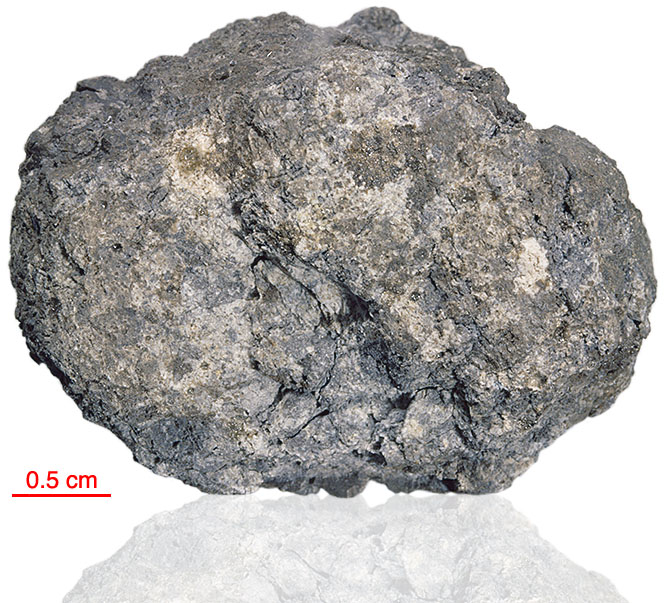
Fact sheet
76575 is a different kind of highland breccia compared to most other samples. It is highly aluminous, with a suevite-like texture. It undoubtedly has an impact origin, but didn’t reach the melting point. The sample is polymict and contains dark glassy clasts of breccia in a lighter coloured breccia matrix. Pyroxene and plagioclase feldspar are the major minerals with metallic iron, troilite and ilmenite present in minor amounts.
The sample weighed 16.2 grams before analysis and has not been dated.
Further details of this and other Apollo samples are here: http://curator.jsc.nasa.gov/lunar/
Apollo 17, the final manned landing mission, had two objectives: to obtain samples of ancient rocks from the lunar highlands and to look for evidence of younger volcanic activity on the valley floor.
This small Collection contains material deriving from both periods, including igneous rocks around 4.3 billion years old from the lunar highlands as well as younger volcanic samples dating from about 3.6 billion years ago.
Apollo 17 was launched on 7 December 1972.






